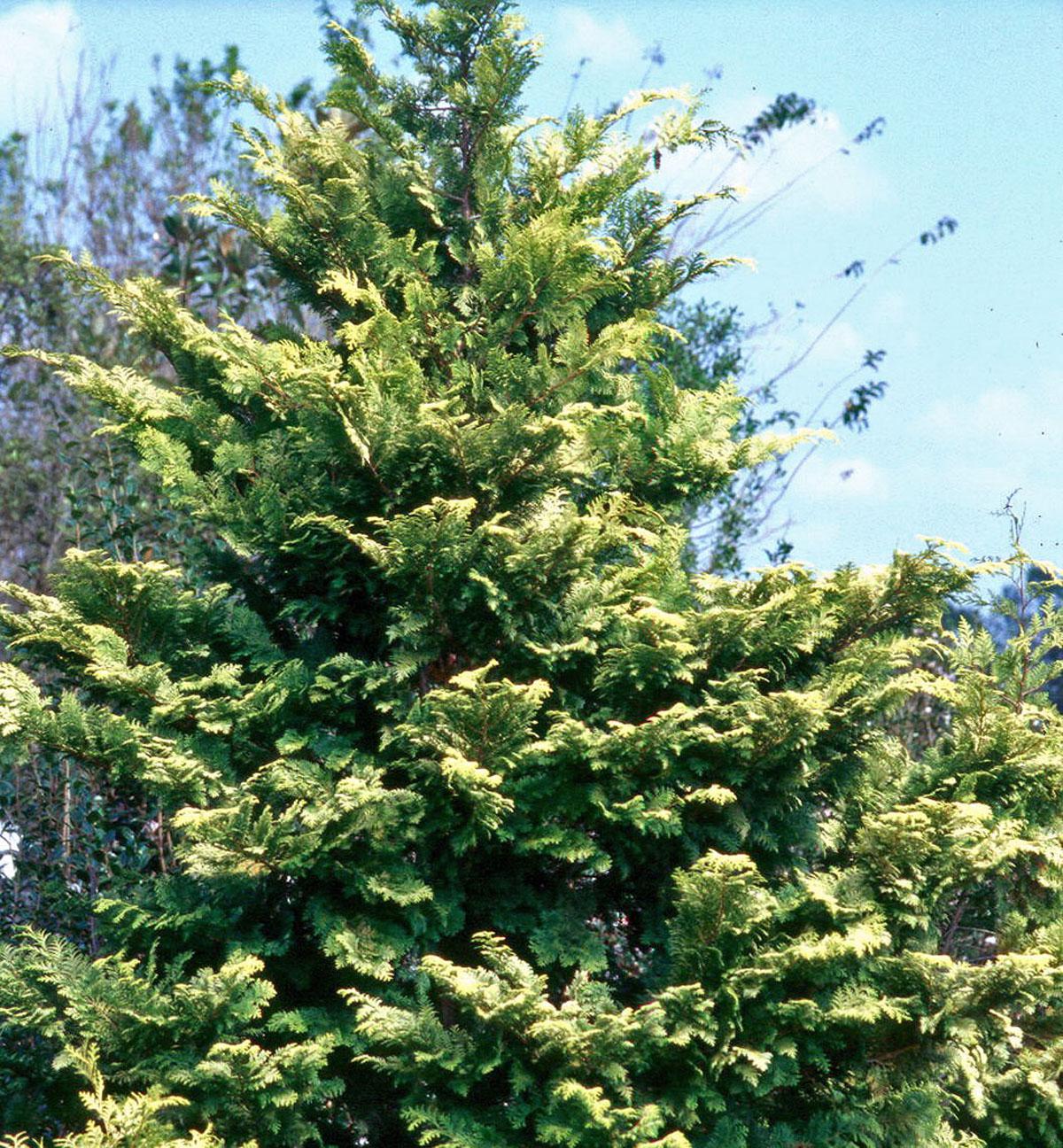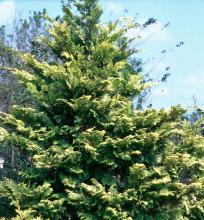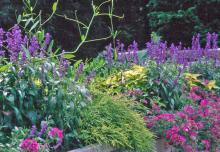Information Possibly Outdated
The information presented on this page was originally released on December 16, 2004. It may not be outdated, but please search our site for more current information. If you plan to quote or reference this information in a publication, please check with the Extension specialist or author before proceeding.
False cypress gives standout performance
By Norman Winter
MSU Horticulturist
Central Mississippi Research & Extension Center
I recently attended a meeting in Lucedale at one of the nurseries that produce woody ornamentals. As I was walking across the field, I noticed some beautiful conifers with glowing golden foliage.
These gold, Christmas tree-shaped plants are known botanically as Chamaecyparis obtusa, or false cypress. The variety that is becoming more popular in the southeast is Crippsii.
The Crippsii can grow to around 20 feet tall in our area, but most I see are in the 10-foot range. The golden-yellow foliage really looks incredible during the cold, dreary winter weather that seems finally to have caught up with us.
The false cypress is native to southern Japan and the island of Taiwan, which would make most think we are a little too hot for it. We do push the limit, I suppose, but where we make up for it is with moisture and humidity, which Crippsii does like.
Ideally, we should provide sun with a little afternoon shade and supplemental water when it's dry and windy. The Crippsii is hardy in zones zones 5 to 8, and though it prefers a cool, moist climate, they have done very well in Mississippi. I have not only seen them in Lucedale, but also Poplarville, Raleigh and several northern towns.
Use the Crippsii as a specimen that is sure to stand out like it is glowing, especially against a backdrop of typical evergreens like hollies, ligustrums or wax myrtles.
These are slow-growing evergreens, tolerant of acidic or alkaline soils.
Another outstanding species is the Sawara false cypress, known botanically as Chamaecyparis pisifera.
You may not be familiar with the term Sawara false cypress, but you may have heard varietal names like Gold Thread Cypress, Gold Mop or perhaps Sungold.
It also is native to southern Japan and performs very well in zones 4 to 8. These shrubs, with their gold- or lime-colored needle-like leaves, are the perfect pick for year-round color.
These are smaller varieties that will stay under 5 feet in our area. Use them for specimen or foundation plantings where you might try them in groups of three or massed for a terrific display.
They color up best in full sun and prefer a humid environment with moist, well-drained soil. In the 10 years that I have lived in Mississippi, I actually have seen them planted at gas stations along hot highways where I was quick to pronounce them "goners." Surprisingly, they did well and taught me once again not to rush to judgment.
The colorful foliage that gives a mounding, yet weeping, effect makes it the perfect partner to stand out in contrast to typical deep, dark green leaves of shrubs.
One of the most striking combinations I have seen recently was in Raleigh, where they are grown with the Mississippi Medallion award-winning loropetalum, which has dark burgundy leaves.
In Atlanta, however, I have seem them used in large planters and combined with blue-violet flowers like scaevola, salvia and verbena.
Both of these Chamaecyparis are revered by conifer collectors and offer all of us another choice when it comes to selecting evergreens for the landscape.




